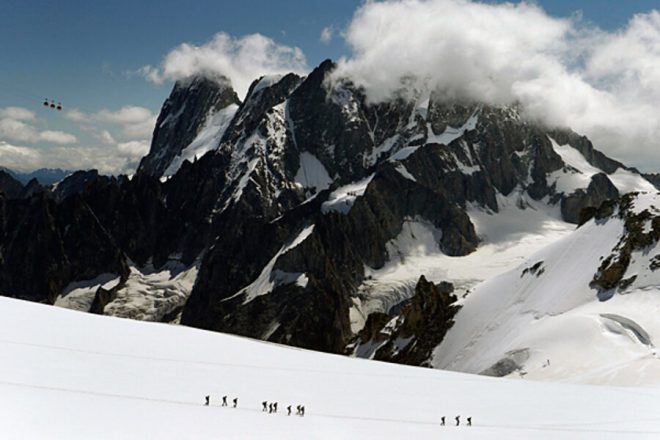Scientists have known for decades that the Earth’s rising temperature, and particularly warming oceans, were melting the Antarctic ice and raising the world’s sea level. Now, new research shows that a critical segment of ice, the Thwaites Glacier, is melting faster than previously believed, Grist reports.
Read Moer:- Scientists discover gigantic ‘structure’ under the surface of the Moon
What’s happening?
Thwaites Glacier, also called the Doomsday Glacier, is one of a ring of glaciers around the edge of the West Antarctic ice sheet. Warm ocean currents run into the ice there, eroding the glacier.
In the past, researchers modeled the rate at which Thwaites Glacier would melt by observing how much of the edge of the glacier was in contact with the warmer seawater. However, in a study published in May and detailed by Grist, researchers revealed that the glacier is more exposed than they previously believed.
Read More:- A New Hydrogen Combustion Engine Is Legitimately Heating Up
Tidal action is weakening the glacier’s grip on the sea floor, the Grist report explained. Beneath the surface, high-pressure pockets are forming where warm water creeps in under the ice.
“We really, really need to understand how fast the ice is changing, how fast it is going to change over the next 20 to 50 years,” co-author Christine Dow, an associate professor of glaciology from the University of Waterloo, told Grist. “We were hoping it would take a hundred, 500 years to lose that ice. A big concern right now is if it happens much faster than that.”
Read More:- Donald Trump’s Crowd at Black Detroit Church Raises Eyebrows
Why is Thwaites Glacier important?
Thwaites Glacier is melting more quickly than almost any other glacier, at a rate of 50 billion tons of ice per year. By itself, it already accounts for 4% of sea level rise, according to Grist, and it holds enough ice to raise the sea level over two feet when it collapses.
But worse, it is part of a rim of ice around a much larger ice sheet, most of which is below sea level. When it collapses, the ocean will likely rush into that bowl of ice, melting it and raising the sea level by almost 11 feet.
Read More:- Olympics-IOC proposes creation of Olympic Esports Games, says Bach
It might not sound like a big deal if the sea level rises by two feet or even 11, but the consequences will be serious as large swathes of coastline are swallowed up. Grist revealed that coastal cities like New York, Mumbai, and Shanghai are at risk, and countries just above sea level like the Marshall Islands and Tuvalu could vanish like a real-world Atlantis.
What’s being done about glacial melt?
According to Grist, some high-risk countries like Singapore and the Netherlands are investing in infrastructure to deal with even the most extreme sea level rise.
Meanwhile, some companies are trying to find ways to add to the Arctic ice to buy time for more permanent solutions.





































